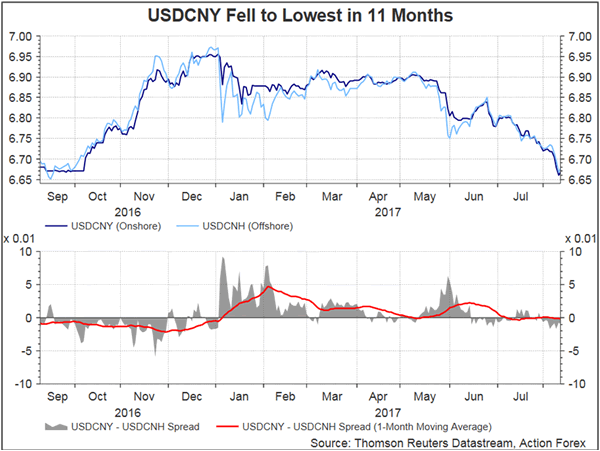Chinese macroeconomic activities showed sharper than expected slowdown in July. Retails sales grew +10.4% y/y in July, down from +11% a month ago. The market had anticipated a milder moderation to +10.8%. Industrial production expanded +6.4% y/y in July, decelerating from +7.6% in the prior month. This came in weaker than consensus of +7.1%. Urban fixed asset investment expanded +8.3% in the first 7 months of the year, slowing from +8.6% in the first half of the year. The market had anticipated a steady growth of +8.6%. The slowdown in economic activities in China has been widely expected as the government pledged to deleverage in at attempted to defend and prevent systematic risks. However the abovementioned three major indicators came in even weaker than expectations. We expect Chinese economic growth to moderate in the second half of the year. Yet, the strength in the first half (GDP growth: +6.9%) signals that the government’s full year target of ‘around +6.5%’ should be able to achieved.
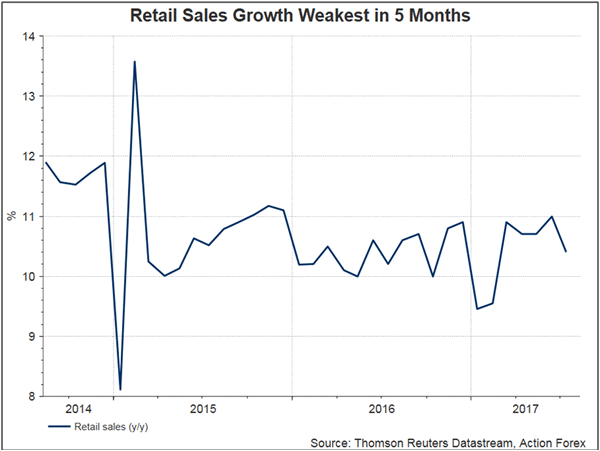
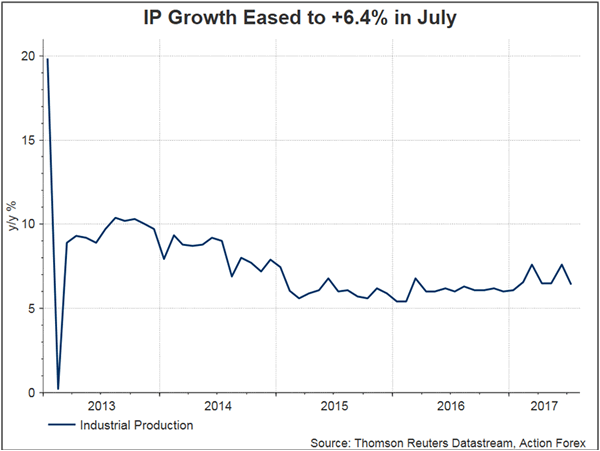

In the second quarter monetary policy report published last Friday, PBOC reiterated its stance to maintain a ‘prudent and neutral’ monetary policy. At the twice a decade National Financial Work Conference held last month, the post-meeting statement omitted the word of ‘neutral’. This triggered speculations that China’s monetary policy would be skewed more to the tightening side in the coming years. Indeed, PBOC drained a net RMB 30B from the market via the reverse repo agreements, following a net drain of RMB 40B in the prior week. Reuters’ data showed that the volume-weighted average rate of the benchmark 7-day repo settled at 2.8373% last Friday, up +5 bps from the close in the prior week.
In his first appearance in the Work Conference, President Xi Jinping announced the establishment of a Financial Stability and Development Committee, an office stemming from PBOC with the objective of overseeing stability and the developments of the financial market. The power of the Committee is above the three existing regulators, namely the China Insurance Regulatory Commission (CIRC), the China Securities Regulatory Commission (CSRC), and the The China Banking Regulatory Commission (CBRC). Establishment of the new Commission also reflects the lack of execution capability of these three traditional agencies.
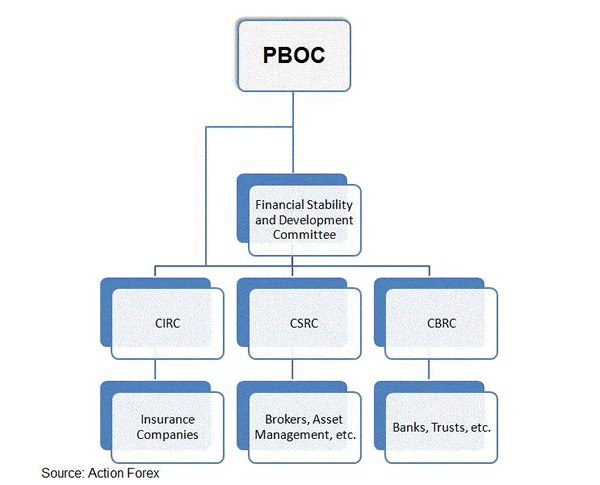
Reiterating President Xi’s comments, PBOC at the monetary policy report noted that the monetary policy would focus on ‘deleveraging’ and to reform the financial sector to serve the real economy while guarding against systemic risks. The central bank suggested that the move might result in a lower growth in the M2 money supply.
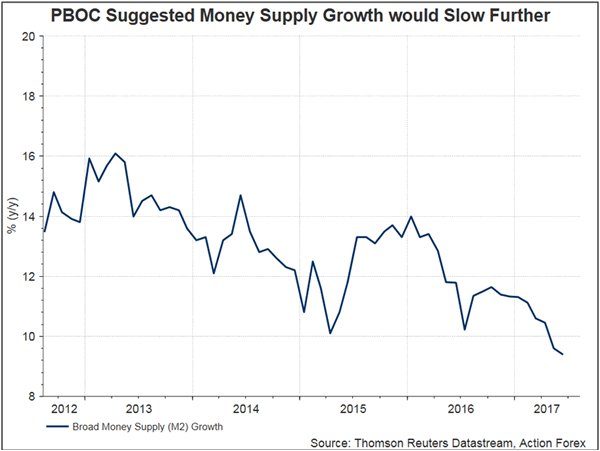
Leveraging to Deleveraging
Over the past years, financial institutions, including banks, in China have developed a variety of highly-leveraged products (interbank deposits, off-balance sheet finance, etc.). It was estimated that China’s total debt soared to almost 300% of GDP, while total corporate debt increased to about 170% of GDP, last year. More importantly, over half of the corporate debt came from state-owned enterprises (SOEs) which contributed only 22% of GDP. The lack of contribution to the real economy, accompanied by huge debts, is the key reason for Xi’s command to deleverage to SOEs. Another area of focus in China’s deleveraging activities is on ‘vampire companies’ which are subsidized by local governments and certain banks, despite their lack of productivity. The debt problems in local governments have become so serious that the central authority proposed a lifetime accountability system for local government debts.
Renminbi
PBOC pledged to maintain a stable and two-way movement in its currency. The central bank affirmed that the ‘counter-cyclical factor’ introduced in May would help reduce the renminbi’s volatility. Yet, we believe the lack of transparency of the components in the factor is a detriment to the internationalization of renminbi. The recent rally of renminbi against the US dollar is more due to weakness in the latter, though.
